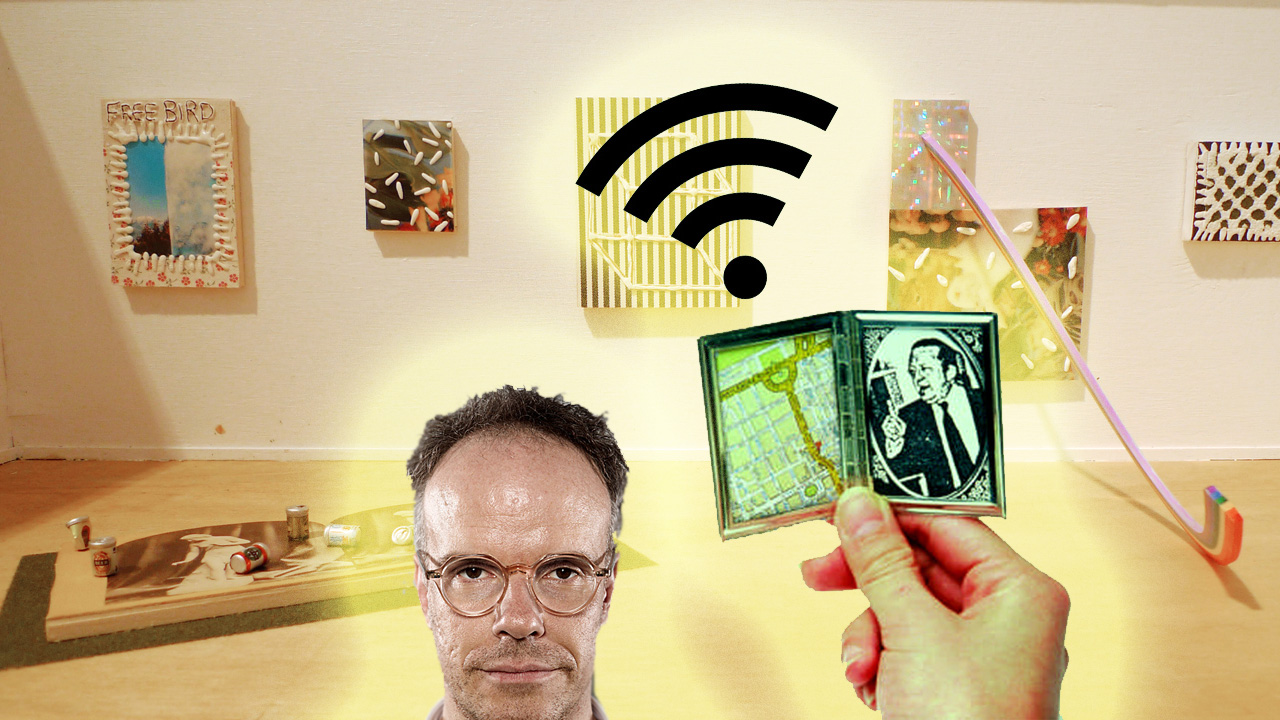Big deal curator Hans-Ulrich Obrist used to carry around an art gallery in his pocket. Artists exhibited inside its 2 by 3 inch picture frame, until Douglas Gordon lost the Nano Museum in a bar in 1990.
Now, Obrist is reviving the project, sort of, by curating a future exhibit at artist Henry Gunderson’s virtual gallery Water McBeer. It’s 300 square inches and “just as real and functional as any other gallery space” Gunderson tells Art F City. Say what? ANIMAL reached out to Gunderson for more information.

The gallery space itself is not virtual. What you see in the photos is an actual 300 square inch space made out of wood. The virtual element is in the digital images from the opening and the web presentation.
The opening doesn’t actually take place. What I do is ask the artist for a guest list of people they would like to attend the opening, then I find images of those people on the Internet via Facebook or Google image search and Photoshop them into the space.
Ahhh. I’ve been to one of those. Shout out Organ Armani!
It’s interesting to see microcuration still being used in the physical art world. Even though this particular art space relies on the internet so heavily for the attendance bit, the art is still installed in a physical space. The tiny Water McBeer gallery seems more like a model, specifically because of the Photoshopped visitors drawing so much attention to its scale.
 That’s one way to go about it, but I also like Anthony Antonellis’s Credit Card Curation project. Every month, Antonellis orders two new credit cards with one of his selected artists’ images. This is similar to the Nano Museum, but less ephemeral. The art isn’t swapped out like in the picture frame gallery, it stays with two new, preserved galleries each month.
That’s one way to go about it, but I also like Anthony Antonellis’s Credit Card Curation project. Every month, Antonellis orders two new credit cards with one of his selected artists’ images. This is similar to the Nano Museum, but less ephemeral. The art isn’t swapped out like in the picture frame gallery, it stays with two new, preserved galleries each month.
Credit Card Curation is also missing that cute nostalgic analog trinketry but it has more zeitgeisty implications — the re-appropriation of a sterile capitalist object as an art space, for example.
Then there’s the RFID chip that we filmed being implanted into Antonellis’s hand that stores 1KB of device-readable data, “a net art tattoo,” as he calls it. Right now it’s exhibiting his work, an undulating gradient as 10 frame, 6 color, 1 kilobyte favicon GIF, but he plans to install other artists’ work in the future. Those could be JPGs, Midi files and ASCII art… all fitting into an art gallery the size of a grain of sand.
What’s next? Microscopic curation? Think small. Do big.
(Images: Evan Nesbit and Tom Betthauser at Water McBeer + Photoshop)


